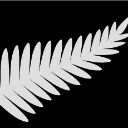- Home
- /
- Programming
- /
- Programming
- /
- How to BLOCK Correctly in SGPLOT SERIES?
- RSS Feed
- Mark Topic as New
- Mark Topic as Read
- Float this Topic for Current User
- Bookmark
- Subscribe
- Mute
- Printer Friendly Page
- Mark as New
- Bookmark
- Subscribe
- Mute
- RSS Feed
- Permalink
- Report Inappropriate Content
SGPLOT Procedure BLOCK Statement shows the following image with blocks around dots—for example, the observation for Janet is located in the middle of the second red box.
I use both SERIES and BLOCK as follows—as a working example, 12 observations from January to December 2020 are displayed. A dummy variable equals one only in February and zero otherwise. The outcome, unlike the plot above, draws the February block after the second dot.
As in the first, I want the block in the middle rather than on the right of the dot. In this case, how can I relocate the block? The following is the MWE code.
data i;
do i=1 to 12;
t=mdy(i,1,2020);
x+rannor(1);
y=i=2;
output;
end;
run;
data j;
input id :$ value fillcolor :$ filltransparency @@;
cards;
i 0 black 1 i 1 black 0.9
;
ods results=off;
ods listing gpath="!userprofile\desktop";
ods graphics/reset;
proc sgplot data=i dattrmap=j;
series x=t y=x;
block x=t block=y/attrid=i nooutline novalues;
xaxis valuesformat=yymmddn6.;
quit;
ods graphics/reset;
ods listing gpath=none;
ods results=on;Accepted Solutions
- Mark as New
- Bookmark
- Subscribe
- Mute
- RSS Feed
- Permalink
- Report Inappropriate Content
Add the points that you want to use as the boundary of the block region. Then create a binary variable that indicates whether t is in the region that you want to shade. For example, the following program uses 15Jan and 15Feb as boundary values:
%let Left = mdy(1,15,2020);
%let Right = mdy(2,15,2020);
data i;
do i=1 to 12;
t=mdy(i,1,2020);
x+rannor(1);
output;
end;
run;
/* add points at boundary of block */
data Block;
t = &Left; output;
t = &Right; output;
run;
/* merge boundary values and then sort */
data All;
merge i Block;
by t;
BlockID = (t>=&Left & t<&Right);
format t DATE9.;
run;
proc sort data=All; by t; run;
data j;
input id :$ value fillcolor :$ filltransparency @@;
cards;
i 0 black 1 i 1 black 0.9
;
proc sgplot data=All dattrmap=j;
series x=t y=x;
block x=t block=blockID /attrid=i nooutline novalues;
xaxis valuesformat=yymmddn9.;
quit;
- Mark as New
- Bookmark
- Subscribe
- Mute
- RSS Feed
- Permalink
- Report Inappropriate Content
You could make your variable a string:
T = put(mdy(I,1,2020),yymmdd.);
- Mark as New
- Bookmark
- Subscribe
- Mute
- RSS Feed
- Permalink
- Report Inappropriate Content
Add the points that you want to use as the boundary of the block region. Then create a binary variable that indicates whether t is in the region that you want to shade. For example, the following program uses 15Jan and 15Feb as boundary values:
%let Left = mdy(1,15,2020);
%let Right = mdy(2,15,2020);
data i;
do i=1 to 12;
t=mdy(i,1,2020);
x+rannor(1);
output;
end;
run;
/* add points at boundary of block */
data Block;
t = &Left; output;
t = &Right; output;
run;
/* merge boundary values and then sort */
data All;
merge i Block;
by t;
BlockID = (t>=&Left & t<&Right);
format t DATE9.;
run;
proc sort data=All; by t; run;
data j;
input id :$ value fillcolor :$ filltransparency @@;
cards;
i 0 black 1 i 1 black 0.9
;
proc sgplot data=All dattrmap=j;
series x=t y=x;
block x=t block=blockID /attrid=i nooutline novalues;
xaxis valuesformat=yymmddn9.;
quit;
April 27 – 30 | Gaylord Texan | Grapevine, Texas
Registration is open
Walk in ready to learn. Walk out ready to deliver. This is the data and AI conference you can't afford to miss.
Register now and lock in 2025 pricing—just $495!
Learn how use the CAT functions in SAS to join values from multiple variables into a single value.
Find more tutorials on the SAS Users YouTube channel.
SAS Training: Just a Click Away
Ready to level-up your skills? Choose your own adventure.





